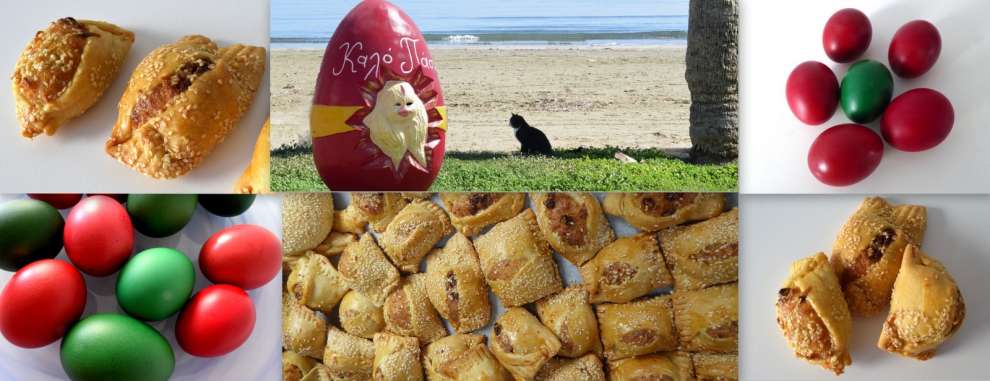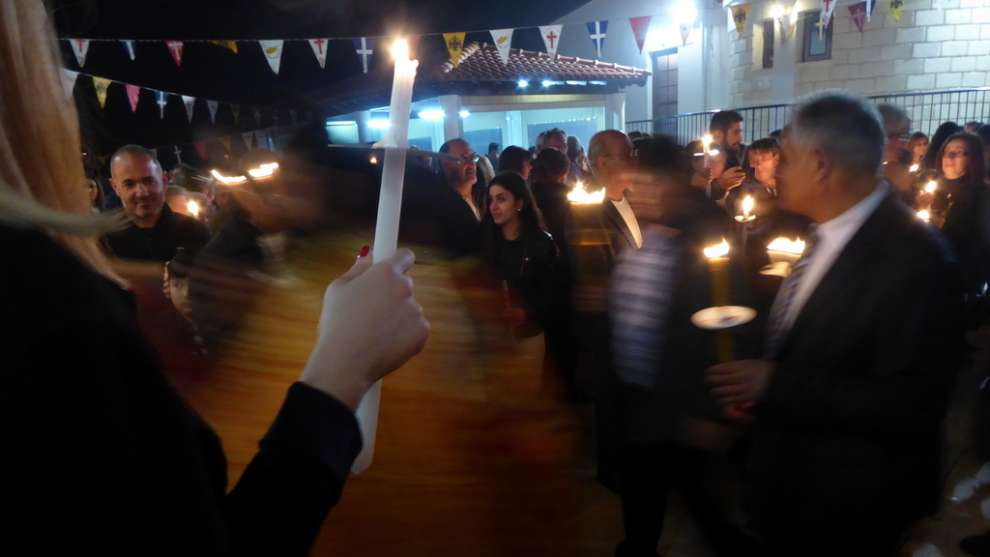Kalo Pascha
(Happy Easter)
Catholic and Orthodox Easter can fall weeks apart. If you came to Cyprus during the last days of April 2016, and you were not familiar with Greek (or other) Orthodox Christianity you might have been puzzled to find casts of bunny rabbits and Easter eggs at every roundabout or Church Front and the words “ΚΑΛΟ ΠΑΣΧΑ” (Happy Easter) , “Pascha” being named after the Jewish “Pesach” (Passover).
“But we had Easter on March 27th,” you might have thought, wondering if you were in a live playing of “Back to the Future.” Well, for the Orthodox Christians, Easter was on May the 1st in 2016. The difference was all down to Pope Gregory XIII who, in 1582, replaced Julius Caesar’s old Julian Calendar with the new Gregorian calendar. Instead of a year having a mean length of 365 days and 6 hours, it now had 365 days, 5 hours, 49 minutes and 12 seconds. (Sounds a bit like a new directive coming from Brussels. Doesn’t it?) At different times the world gradually adopted the new Gregorian Calendar. However, for calculating when Easter should be celebrated, the Orthodox Christians stuck rigidly to the old Julian Calendar. This is what causes the calculations to yield different results.
Every so often the dates coincide in both calendars. 2017 was one of those years which saw both East and West celebrating on the 16th of April.
In 2018 Orthodox Easter falls a week later. It always comes after the Jewish Passover.
Traditionally, preparation for Easter lasts for approximately two months. People are invited by the Church to abstain from meat and fish and all dairy products for the 50 days of lent. You can read more about this tradition in my article "How I lost ten kilos, following the Greek Orthodox nativity and lenten fasts". The start of the “Nistia” is on “Kathara Deytera” or “Clean Monday”, the first day of lent. It is often celebrated with a community festivity with Nistissima foods as described in the article on Clean Monday in Lageia. The Thursday 11 days before Clean Monday is “Tsiknopempti” (literally meaning Thursday of the smell of chargrilled meat) which is noted for the smell of barbecues everywhere one turns. It is a veritable meat feast. If one is undertaking the fast (or more correctly 50-day period of abstinence), it may be the last occasion to eat meat till Easter two months later.

There are two days where the fast is partially relaxed and fish can be eaten. The first is on the 25th of March, which is a double celebration, a national one (Greek Independence Day) and a religious one, the Feast of the Annunciation to Mary by the Angel Gabriel. This is how one Cyprus village celebrates it. The second is Palm Sunday, the week before Easter, which celebrates the arrival of Christ on a donkey into Jerusalem. Greek churches are always full on a Sunday, but this is one of the days on which they are overflowing. There will be a small procession round the church, but on Good Friday there will be a bigger procession round the neighbourhood for the “Epitafio”.

Finally, Easter arrives. For the Greeks, Easter is far more important than the, nowadays, over-commercialised Christmas. The Easter Liturgy is celebrated on Saturday night. The dawn of Sunday is quite dramatic. A little before midnight the lights go out. All the members of the congregation are holding a previously purchased large candle. At midnight a lantern is brought from behind the altar. The nearest candles are lit and the people holding them turn and offer light to their neighbours and in no time at all everyone in the congregation is holding a lit candle. It makes me think of a demonstration of multi-level marketing.
The flame has been flown over from Jerusalem where year after year the miracle of the holy fire has been enacted for centuries when the Greek Orthodox Patriarch enters the Church of the Holy Sepulchre on Easter Saturday and a miraculously-arising blue light fires up unlit oil lamps and some candles that he has brought in. Nowadays lanterns lit from this self-igniting flame are flown to Orthodox churches round the world. Jews and Muslims claim it to be fraudulent. To Greeks it is a sign of confirmation of “Correct praise/faith” (the literal meaning of Orthodoxy).
My impression is that while the Catholics concentrate on the sufferings of Christ and the Stations of the Cross, the Greeks are far more focussed on the joy of the resurrection. After midnight, as the priest repeatedly comes round proffering incense, he is literally shouting with joy “Christos Anesti” (Christ is risen). The midnight service finishes with a procession outside round the church, everyone still holding his candle and when it is all over, groups of friends and relations, all decked out in their Sunday extra best will gather round and wish each other “Χρόνια πολλά” and “Χριστός ανέστη” (Christ is risen) to which the traditional reply is “Αληθώς ανέστη” (he is truly risen).
As in the West, eggs play a prominent role at Easter time. Eggs have been used as symbols of life and fertility for a long time back in history. The Jews use a hard-boiled egg dipped in salt water in the Seder Passover. The ancient Persians painted eggs for Nowrooz (still celebrated by the Kurds), their New Year which takes place at the Spring Equinox). You will all be familiar with the chocolate form that Easter eggs take in the UK.
In Greece and Cyprus , eggs are hard-boiled and dyed to celebrate Easter. In other Orthodox countries like Russia and Bulgaria they are intricately painted. Greeks use different colours, but predominantly red, representing the blood of Christ. There is a tradition reminiscent of a game of conkers, whereby one person holds out a painted egg in his left hand and another person strikes it with another egg saying “Christos Anesti” (Christ is risen). Then he holds his egg out and the other person strikes it saying “Alithos Anesti”(truly he is risen). The person with more of his egg intact wins.

Much Baking is done on Holy Thursday in both Greece and Cyprus. In Greece a lot of “Tiropites” (cheese pies using filo pastry) and “Tsourekia” are prepared. “Tsoureki” is a sweet breed similar to the Jewish Challa bread. Cyprus has its own Easter Speciality – Flaounes, usually baked on Holy Thursday.
If you are in Cyprus at the time, and you have never been to a Greek Easter liturgy, you might consider adding it to your collection of life experiences by attending the Saturday midnight service. The chants and ceremonials make it quite beautiful!
Kalo Pascha.
Postscript. The final Easter celebration takes place not on Easter Sunday itself, but on the following day on Easter Monday. Easter day is generally celebrated with families and close friends. On Easter Monday there are many community celebrations such as I describe in my article on Cyprus Village Festivals.

When Easter day celebrations are over you still have the Community Fun of Easter Monday to enjoy.

 English
English
 Ελληνικά
Ελληνικά Русский
Русский










 Posted by
Bill Warry
Posted by
Bill Warry






